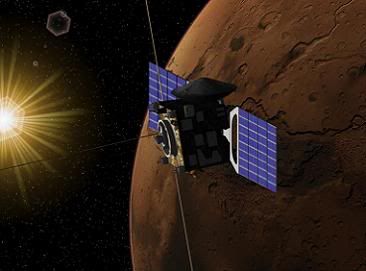Post by glactus on Sept 12, 2011 23:57:37 GMT
The National Aeronautics and Space Administration (NASA) brings us unforgettable images of space. Especially exciting are the pictures taken by spacecraft orbiting distant planets or flying across the solar system, such as missions to Mars and the Cassini Huygens mission to Saturn and its large moon Titan

Cassini at saturn
This long-distance photography involves three steps, taking the picture, getting the picture, and making the picture. The long-distance photography described here is a complicated process that depends on our ability, here on Earth, to communicate with spacecraft across the solar system.

The Deep Space network
This communication is the responsibility of the Deep Space Network, a global system of powerful antennas managed by the Jet Propulsion Laboratory (JPL) for NASA. JPL, a division of the California Institute of Technology, is dedicated to robotic space exploration and to the scientific study of Earth as a planet

The Mars Express spacecraft
Making the picture is the work of JPL's Multimission Image Processing Laboratory. Once the data are received from the Deep Space Network, computers at JPL reformat the bits into a twodimensional image. The data are calibrated and processed to ensure a true representation of the targeted planet, moon, or other object.
The resulting digital products are transferred electronically to science teams and engineers for analysis, archive systems for long-term preservation, and to the public for viewing and downloading through JPL's World Wide Web sites. These images are the breathtaking pictures that bring space to Earth!

Credits: These are NASA/JPLimages
Text by NASA's Jet propulsion laboratory and the Californian Institute of Technology.

Cassini at saturn
This long-distance photography involves three steps, taking the picture, getting the picture, and making the picture. The long-distance photography described here is a complicated process that depends on our ability, here on Earth, to communicate with spacecraft across the solar system.

The Deep Space network
This communication is the responsibility of the Deep Space Network, a global system of powerful antennas managed by the Jet Propulsion Laboratory (JPL) for NASA. JPL, a division of the California Institute of Technology, is dedicated to robotic space exploration and to the scientific study of Earth as a planet

The Mars Express spacecraft
Making the picture is the work of JPL's Multimission Image Processing Laboratory. Once the data are received from the Deep Space Network, computers at JPL reformat the bits into a twodimensional image. The data are calibrated and processed to ensure a true representation of the targeted planet, moon, or other object.
The resulting digital products are transferred electronically to science teams and engineers for analysis, archive systems for long-term preservation, and to the public for viewing and downloading through JPL's World Wide Web sites. These images are the breathtaking pictures that bring space to Earth!
Credits: These are NASA/JPLimages
Text by NASA's Jet propulsion laboratory and the Californian Institute of Technology.


